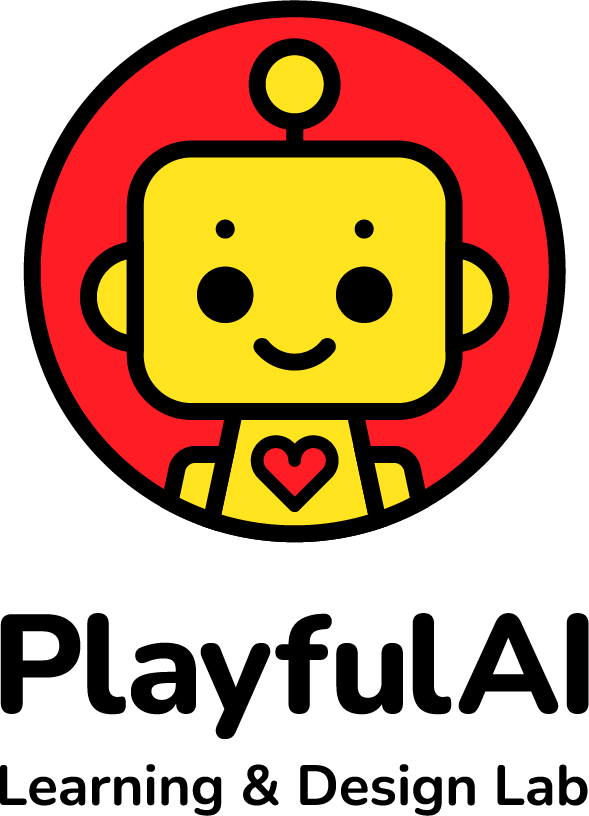Dr. Wang and Grace presented at the 2024 Annual Meeting of AERA!

Grace presented her co-authored paper with Dr. Wang titled “Preschoolers’ Higher-Order Executive Functions through Embodied and Shared Computational Thinking with a Programming Toy” at the symposium “Integrating Computational Thinking and Other Developmental and Learning Domains in Early Childhood”. Dr. Wang is the discussant of this session.
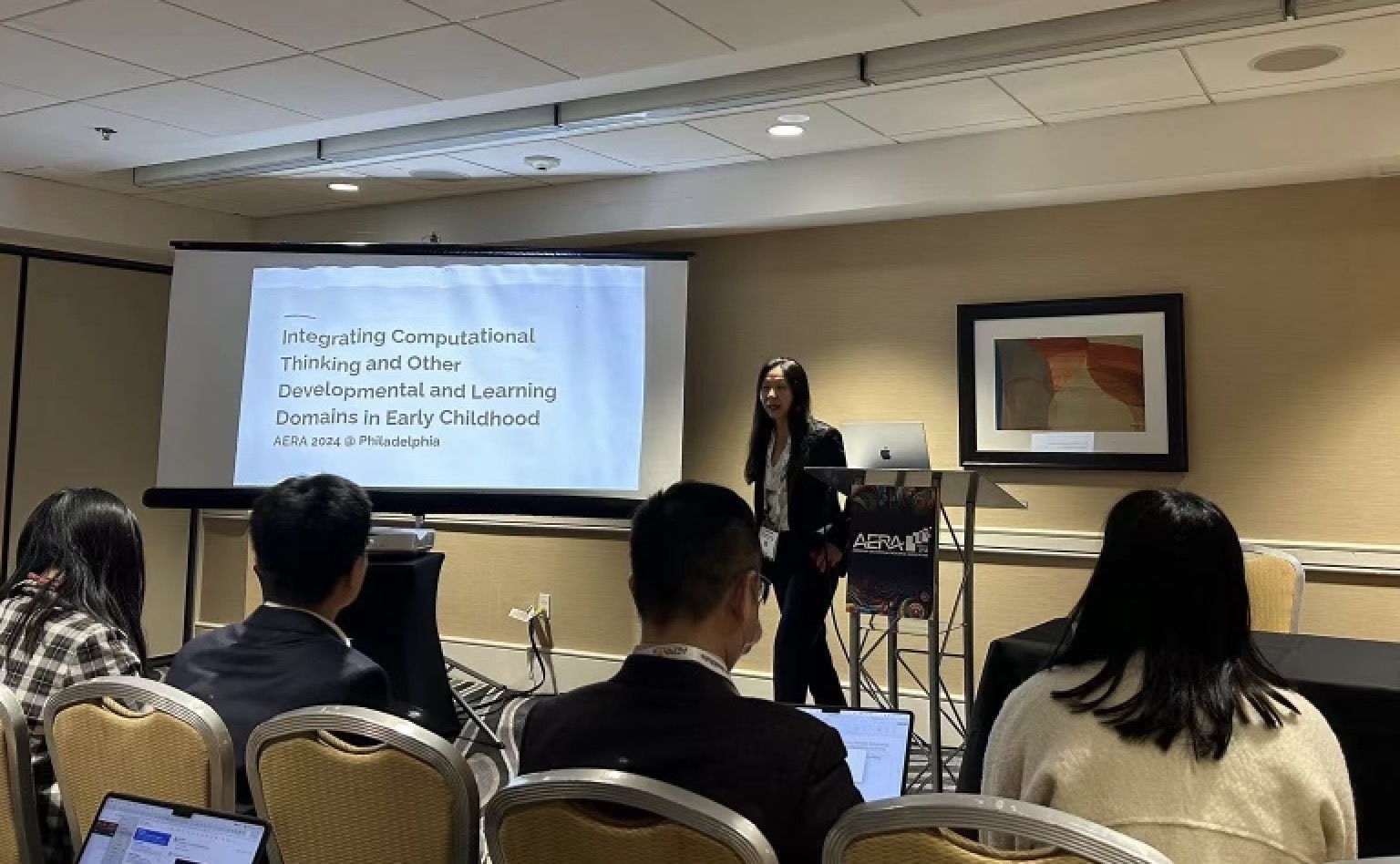
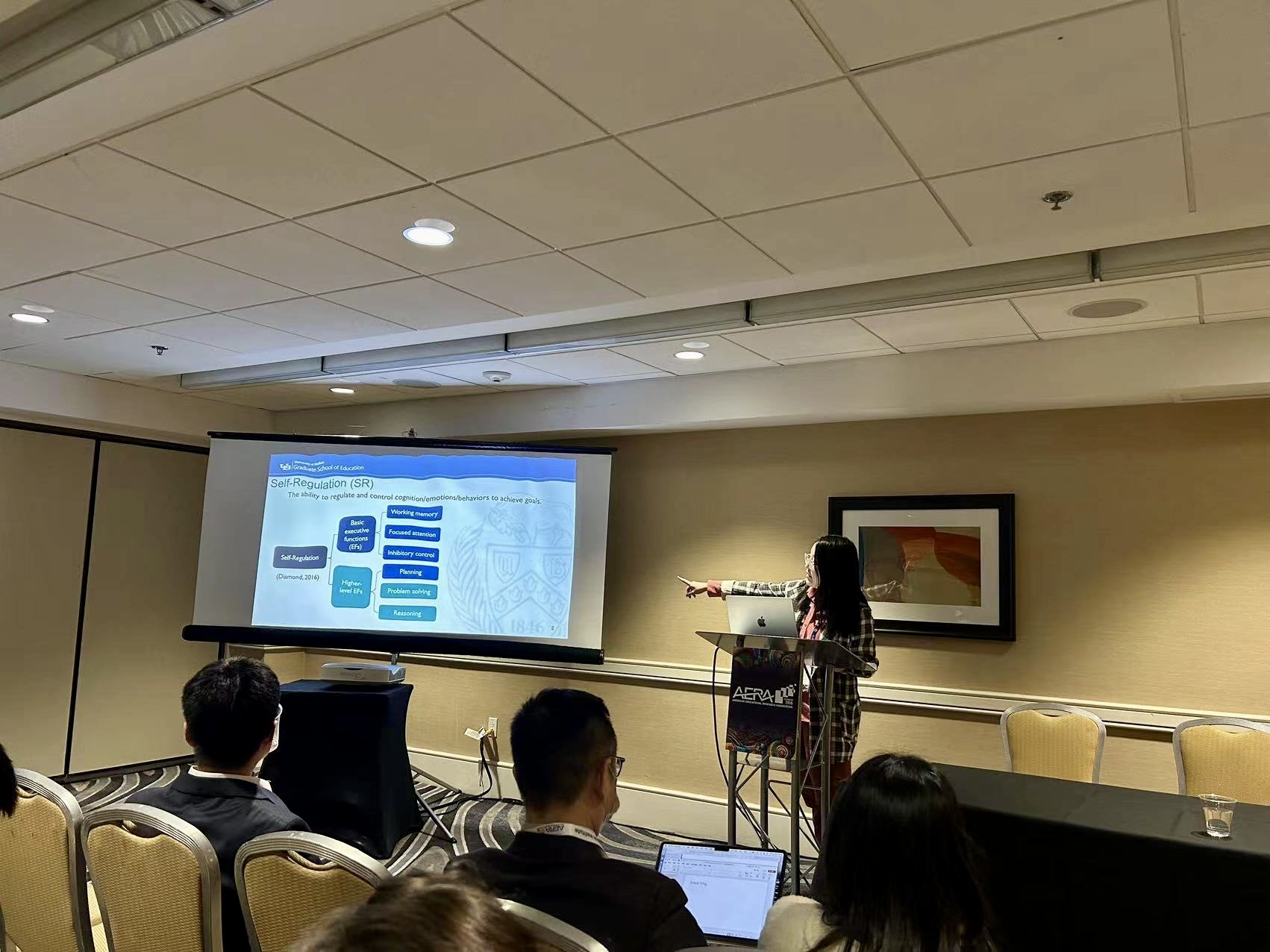
Abstract
Computational thinking (CT), defined as the systematic analysis, exploration, and testing of solutions rooted in computer science practices (Wing, 2011), is gaining recognition in early childhood education (ECE) as a means to foster children’s interest in STEM (Bers, 2019). While its integration into ECE is promising, concerns have been raised that CT has not been fully aligned with children’s foundational developmental domains, such as self-regulation (SR) and social-emotional learning (Wang & Proctor, 2022). Given the profound impact of SR on children’s social adjustment and education outcomes (Rimm-Kaufman et al., 2009), it is important to examine the relationship between SR and CT. Existing research finds a positive association between CT and self-regulation, such as attention regulation, inhibitory control, and planning skills (e.g., Arfé et al., 2019; Arfé et al., 2020; Di Lieto et al., 2017; Wang et al., 2023), however, little is known about how embodied, and social interactional processes in CT activities can support young children’s self-regulation, especially higher-order executive functions (EF).
We examine how preschoolers engage in embodied and shared self-regulation through CT with a tangible programming toy in teacher-guided small groups to address this gap. Adapting Papert’s (1980) concepts of body/ego syntonicity and the phenomenologist Schutz’s notion of the “we-relationship”, we use a we-syntonicity framework (Wang et al., 2022) to make sense of preschoolers’ embodied and shared regulatory processes in reasoning, a critical higher-order EF (Diamond, 2016).
Our study is part of a broader project investigating children’s CT learning at a university-affiliated preschool in the US. The programming toy we used was Fisher-Price’s “Think and Learn Code-a-pillar,” which looks like a caterpillar with detachable body segments that can program the toy to move left, right, and straight, and participating children named it “Rapunzel.” Children worked with Rapunzel in small groups once or twice a week (an average of 15 minutes per session) for over 12 weeks. Participants included 22 children aged 3-4 and two teachers. All sessions were video recorded, creating a corpus of about 15 hours. For this paper, we conducted multimodal microanalysis (Jordan & Henderson, 1995) of a subset of sessions of small groups learning “conditionals” (i.e., how Rapunzel’s movement was affected by different surfaces, including blanket, carpet, and blocks).
Our analysis shows that preschoolers guided by their teacher actively engaged in deductive reasoning processes. They leveraged their body syntonicity: identification and resonance between Rapunzel and their “sense and knowledge about their own bodies” (Papert, 1980; p. 63) as well as their ego syntonicity: identification and resonance between Rapunzel and their “sense of self as people with intentions, goals, desires, likes, and dislikes” (p. 63) to deduce how difference surfaces affected Rapunzel’s movement. Their body/ego syntonicity with Rapunzel was mediated by the “attunement” (we-syntonicity) to each other’s embodied exploration of Rapunzel’s movement (e.g., touching/feeling the surface) and emotional responses to Rapunzel’s triumph (e.g., reaching home) or challenges (e.g., getting stuck). Our findings challenge conventional perceptions of children’s self-regulation as solely individualistic and mind-bounded and underscore how embodied and collaborative CT can support young children’s self-regulation.
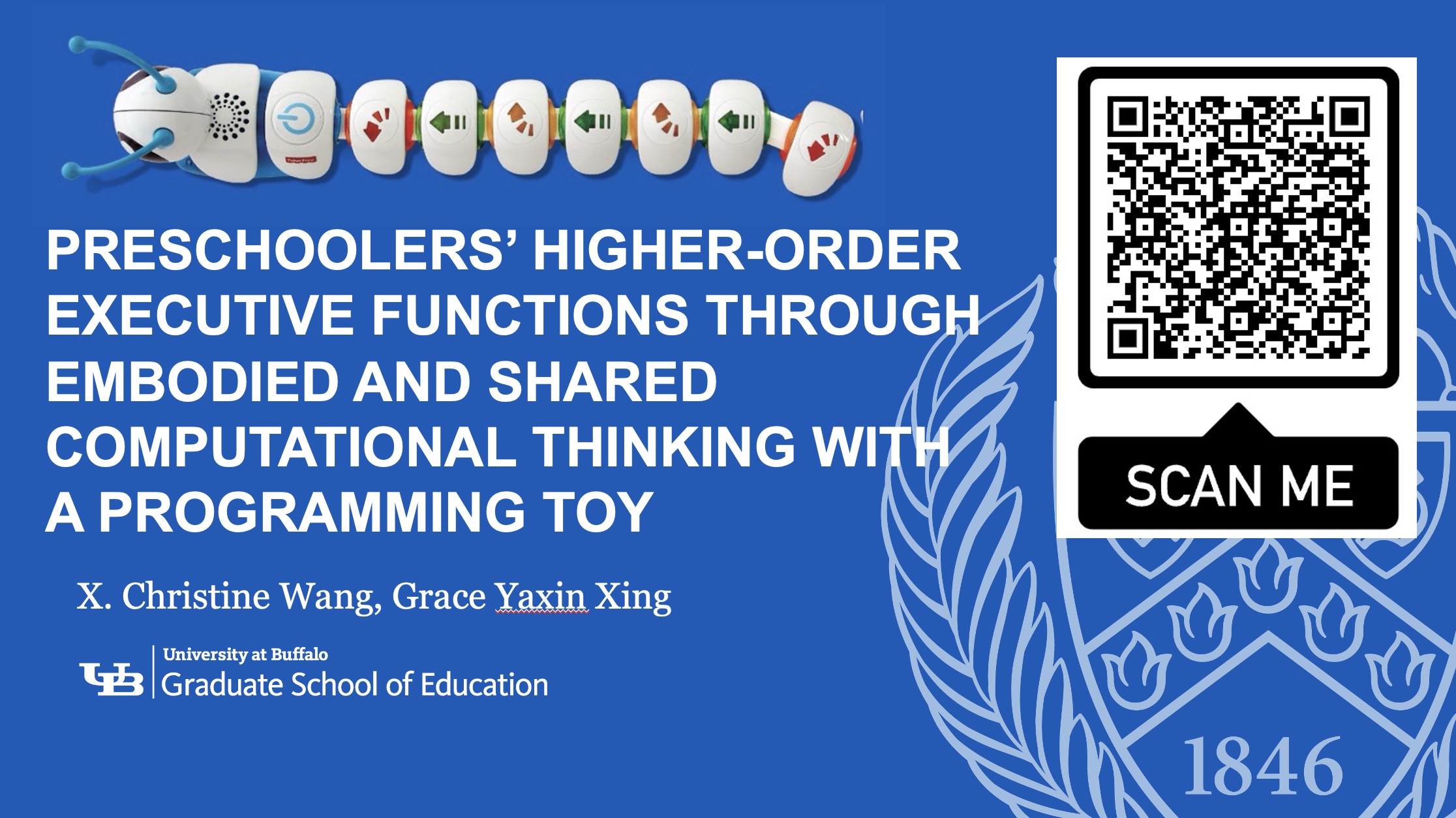
Presentation link: https://docs.google.com/presentation/d/1wJjBf0kXhahv3WtT2qawJ1jW7qMjLxtd/edit?usp=drive_link&ouid=114542972200771707872&rtpof=true&sd=true
Dr. Wang presented a paper titled “English-Language App Book Reading Among Linguistically Diverse Kindergarteners” under “Bedtime Stories in the 21st Century: What We Know—and Need to Know—About Digital Reading for Young Children” Symposium.
Authors: Tanya M. Christ, Oakland University; X. Christine Wang, University at Buffalo – SUNY; Charles L. Mifsud, University of Malta; Rositsa Georgieva, L-Università ta’ Malta; Ming Ming Chiu, The Education University of Hong Kong
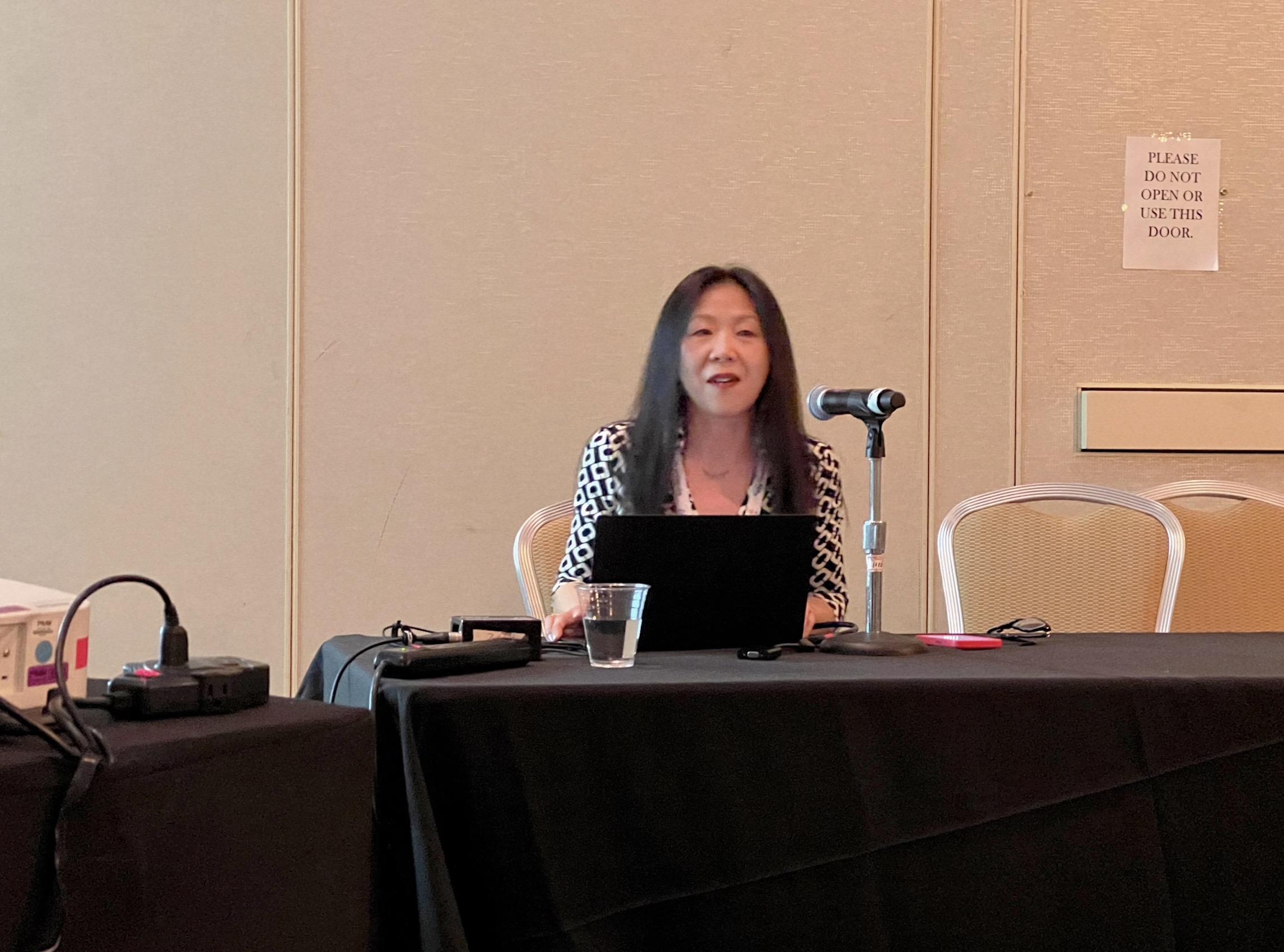
Abstract
Significance
Research shows that child characteristics, app book features, and during reading behaviors impact children’s comprehension outcomes when reading app books. However, while some studies have investigated children’s app book reading in a second language, we have not found any studies that explore app book reading across children with varied linguistic backgrounds. It is important to understand this to inform teaching practices for using app books with linguistically diverse students. To address this, we explore how child linguistic background, during reading behaviors, and app book features are related to retelling outcomes when reading English-language app books.
Methods
Across a year-long project, 121 linguistically diverse kindergarteners from Malta and the U.S. each read four English-language app books with interactive features and then retold the story. These sessions were video-recorded and transcribed. We used emergent coding and constant comparative analysis to identify reading behavior codes from the transcriptions. Then two coders applied these across all reading sessions and scored the transcriptions of retellings using a narrative elements rubric. We used multivariate outcome, multilevel analysis to identify the relations between child characteristics, during reading behaviors, app book features, and retelling outcomes.
Findings and Implications
Child Linguistic Characteristics. English dominant students retold characters better, whereas bilingual students had more difficulty. Bilingual students were more likely to retell the problem, whereas Maltese dominant students had more difficulty. Maltese dominant and bilingual children had more difficulty retelling events. Being Maltese dominant hindered total retelling scores. Given the nuance in how language intersects with retelling different narrative elements, it may be useful to explore varied supports for diverse learners for different narrative elements.
Book Features. App books that had word hotspots supported retelling characters and resolution; navigation menus supported retelling events and total retelling scores; vocabulary meaning hotspots supported retelling resolution but hindered retelling the problem and events; text highlighting hindered retelling events and total retelling score; and story hotspots hindered total retelling scores.
These findings demonstrate how digital features may support (a) some learning outcomes but not others; and (2) different aspects of meaning-making. This provides more specific guidance for book selection. Since child linguistic characteristics did not mediate which features supported better retelling outcomes, these may be more universal.
During Reading Behaviors. Reading sequentially supported retelling characters, events, resolution, and total score. Pressing the words in the book to make them read supported retelling characters, resolution, and total score. Monitoring supported retelling characters, events, and total score. Only using hotspots supported retelling characters and events. Using auto-read while activating hotspots supported retelling events, and just auto-read supported retelling the problem.
These findings demonstrate that (1) that some app book reading behaviors more broadly support better retelling (e.g., reading sequentially) than others (e.g., just auto-read); and (2) jointly using multiple kinds of during reading behaviors could better support children’s retelling outcomes. Since child linguistic characteristics did not mediate which reading behaviors supported better retelling outcomes, these may be more universal.
